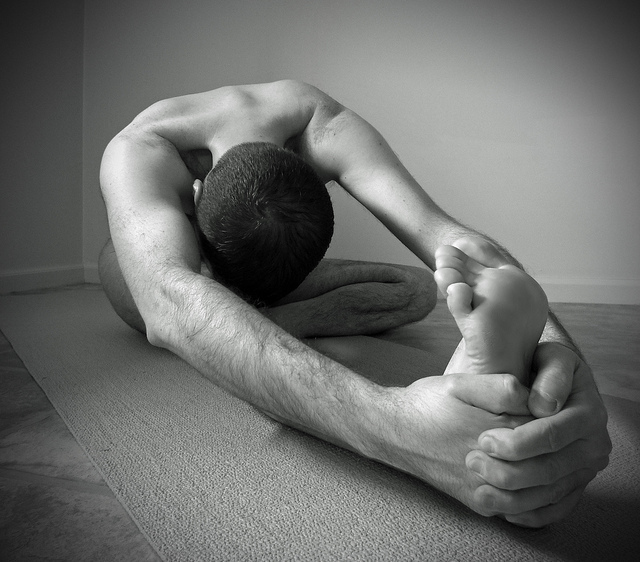In our blog, we are always mentioning “perform a job hazard analysis” in our safety tips; however, it made me ask: “Just exactly what is a job hazard analysis?” So I went to the OSHA site and am sharing the instructions on how to conduct this analysis. This information is for employers, foremen, and supervisors, but employees are encouraged to use the information as well to analyze their own jobs and recognize workplace hazards so they can report them to you. It explains what a job hazard analysis is and offers guidelines to help you conduct your own step-by-step analysis. The document (OSHA 3071) also continues with pictures and form samples that you may use to complete your analysis.
What is a hazard?
A hazard is the potential for harm. In practical terms, a hazard often is associated with a condition or activity that, if left uncontrolled, can result in an injury or illness. Identifying hazards and eliminating or controlling them as early as possible will help prevent injuries and illnesses.
What is a job hazard analysis?
A job hazard analysis is a technique that focuses on job tasks as a way to identify hazards before they occur. It focuses on the relationship between the worker, the task, the tools, and the work environment. Ideally, after you identify uncontrolled hazards, you will take steps to eliminate or reduce them to an acceptable risk level.
Why is job hazard analysis important?
Many workers are injured and killed at the workplace every day in the United States. Safety and health can add value to your business, your job, and your life. You can help prevent workplace injuries and illnesses by looking at your workplace operations, establishing proper job procedures, and ensuring that all employees are trained properly.
One of the best ways to determine and establish proper work procedures is to conduct a job hazard analysis. A job hazard analysis is one component of the larger commitment of a safety and health management system.
What is the value of a job hazard analysis?
Supervisors can use the findings of a job hazard analysis to eliminate and prevent hazards in their workplaces. This is likely to result in fewer worker injuries and illnesses; safer, more effective work methods; reduced workers’ compensation costs; and increased worker productivity. The analysis also can be a valuable tool for training new employees in the steps required to perform their jobs safely.
For a job hazard analysis to be effective, management must demonstrate its commitment to safety and health and follow through to correct any uncontrolled hazards identified. Otherwise, management will lose credibility and employees may hesitate to go to management when dangerous conditions threaten them.
What jobs are appropriate for a job hazard analysis?
Jobs with the highest injury or illness rates;
Jobs with the potential to cause severe or disabling injuries or illness, even if there is no history of previous accidents;
Jobs in which one simple human error could lead to a severe accident or injury;
Jobs that are new to your operation or have undergone changes in processes and procedures; and
Jobs complex enough to require written instructions.
A job hazard analysis can be conducted on many jobs in your workplace. Where do I begin? Involve your employees.
It is very important to involve your employees in the hazard analysis process. They have a unique understanding of the job, and this knowledge is invaluable for finding hazards. Involving employees will help minimize oversights, ensure a quality analysis, and get workers to “buy in” to the solutions because they will share ownership in their safety and health program.
Review your accident history.
Review with your employees your worksite’s history of accidents and occupational illnesses that needed treatment, losses that required repair or replacement, and any “near misses” —events in which an accident or loss did not occur, but could have. These events are indicators that the existing hazard controls (if any) may not be adequate and deserve more scrutiny.
Conduct a preliminary job review.
Discuss with your employees the hazards they know exist in their current work and surroundings. Brainstorm with them for ideas to eliminate or control those hazards. If any hazards exist that pose an immediate danger to an employee’s life or health, take immediate action to protect the worker.
Any problems that can be corrected easily should be corrected as soon as possible. Do not wait to complete your job hazard analysis. This will demonstrate your commitment to safety and health and enable you to focus on the hazards and jobs that need more study because of their complexity. For those hazards determined to present unacceptable risks, evaluate types of hazard controls.
List, rank, and set priorities for hazardous jobs. List jobs with hazards that present unacceptable risks, based on those most likely to occur and with the most severe consequences. These jobs should be your first priority for analysis.
Outline the steps or tasks.
Nearly every job can be broken down into job tasks or steps. When beginning a job hazard analysis, watch the employee perform the job and list each step as the worker takes it. Be sure to record enough information to describe each job action without getting overly detailed. Avoid making the breakdown of steps so detailed that it becomes unnecessarily long or so broad that it does not include basic steps. You may find it valuable to get input from other workers who have performed the same job.
Later, review the job steps with the employee to make sure you have not omitted something. Point out that you are evaluating the job itself, not the employee’s job performance. Include the employee in all phases of the analysis—from reviewing the job steps and procedures to discussing uncontrolled hazards and recommended solutions.
Sometimes, in conducting a job hazard analysis, it may be helpful to photograph or videotape the worker performing the job. These visual records can be handy references when doing a more detailed analysis of the work.
How do I identify workplace hazards? A job hazard analysis is an exercise in detective work. Your goal is to discover the following: What can go wrong? What are the consequences? How could it arise? What are other contributing factors? How likely is it that the hazard will occur?
To make your job hazard analysis useful, document the answers to these questions in a consistent manner. Describing a hazard in this way helps to ensure that your efforts to eliminate the hazard and implement hazard controls help target the most important contributors to the hazard.
Good hazard scenarios describe:
Where it is happening (environment), who or what it is happening to (exposure), what precipitates the hazard (trigger), the outcome that would occur should it happen (consequence), and any other contributing factors.
Rarely is a hazard a simple case of one singular cause resulting in one singular effect. More frequently, many contributing factors tend to line up in a certain way to create the hazard. Here is an example of a hazard scenario:
In the metal shop (environment), while clearing a snag (trigger), a worker’s hand (exposure) comes into contact with a rotating pulley. It pulls his hand into the machine and severs his fingers (consequences) quickly.
To perform a job hazard analysis, you would ask:
What can go wrong? The worker’s hand could come into contact with a rotating object that “catches” it and pulls it into the machine.
• What are the consequences? The worker could receive a severe injury and lose fingers and hands.
• How could it happen? The accident could happen as a result of the worker trying to clear a snag during operations or as part of a maintenance activity while the pulley is operating. Obviously, this hazard scenario could not occur if the pulley is not rotating.
• What are other contributing factors?
This hazard occurs very quickly. It does not give the worker much opportunity to recover or prevent it once his hand comes into contact with the pulley. This is an important factor, because it helps you determine the severity and likelihood of an accident when selecting appropriate hazard controls. Unfortunately, experience has shown that training is not very effective in hazard control when triggering events happen quickly because humans can react only so quickly.
Note: This very thing happened to the son of one of my friends about two weeks ago. The fingers of the gloves he wore were slightly too long, and the glove got caught in a piece of equipment, injuring his hand before the machine could be stopped, to remove his hand. He missed some days of work, but luckily, none of his fingers. pb
Source: OSHA



